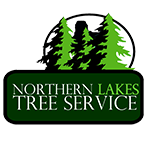Tree Safety
The length of time a tree can live depends on several factors. Some depend on kinds and species, and some depend on natural causes and human intervention. However, the realization that a tree is at the end of its life span due to natural and structural failure should not be taken lightly. Tree owners must take full responsibility for any damage or risk caused by tree failure. To avoid such harm to your property, neighborhood, and community, owners must ensure trees' safety.
Essential Practices in Tree Safety and Inspection
Tree Safety and Inspection aims to strengthen, protect, and de-stress your trees. A balanced approach forms the basis of a tree safety and inspection strategy. To cover this strategy, we provide you with three essential practices.
1. Tree Inspection
Tree assessment is a combination of visual inspection and examination using a drill and other equipment. The first procedure, visual inspection, is a process wherein one has to look at the external structure of trees to see if there are visible defects or abnormal conditions. The other procedure may seem to be more complicated. This requires the use of drills and other necessary equipment to dig up and inspect more of its internal decay and damage. Needless to say, both procedures’ target is to determine an early stage of tree failure to cease any risk development.
2. Associated Risk Management
Managing associated risk will take reasonable care in omitting such foreseeable risk of injury and damage both to persons and property. This may be established by homeowners themselves, but we highly recommend seeking out a professional tree service partner. Some of the procedures for inspecting and managing risk (example: risk of falling branches) require proper knowledge that surely an arborist or tree care specialist can provide.
Not all related tree risks are easy to spot; arborists will go beyond what a normal homeowner can see. Arborists will focus on a tree’s overall health condition, including the root system, the tree’s soil condition, and other elements that influence a tree’s risk potential.
3. Strategic Action
A reasonable and balanced approach must be taken to complete these essential practices. Homeowners should contemplate a strategy that will consider their own wellness or the entire community, including trees’ safety. They should think of an approach that will mutually benefit homeowners and trees. After thinking about it, decide whether you can initiate the course of action by yourself or if you need to call a tree specialist. Always remember in constructing strategic action to: identify, prioritize, and undertake safety work according to the level of risk.
Keep in mind:
• Frequency of Inspection
If you consider your tree a special tree—trees that you want to retain for specific purposes such as heritage, habitat, or aesthetic satisfaction but which may present significant risk—these are likely to require regular, detailed inspection to properly manage them without serious loss of the benefits they provide.
• Valuation of tree safety
Motivate yourself to maintain tree safety by opening your eyes widely to the importance and benefits this practice can bring. Foresee events like severe weather conditions. Protect your home and property during this season by taking precautionary measures.
• Contact a local arborist near you.
Northern Lakes Tree Service can carry out tree inspections on individual trees to assess associated risk, internal and external defects, and the overall structural state of the tree. Rest assured that our arborist will offer an undeniable and professional service that will cover complete preventative measures in accordance with the identified risk.
Schedule an expert consultation for your trees today.
Call Now!
Owner: Damon M. Bretthauer
Phone: (208) 443-3600
Cell: (208) 610-3718
